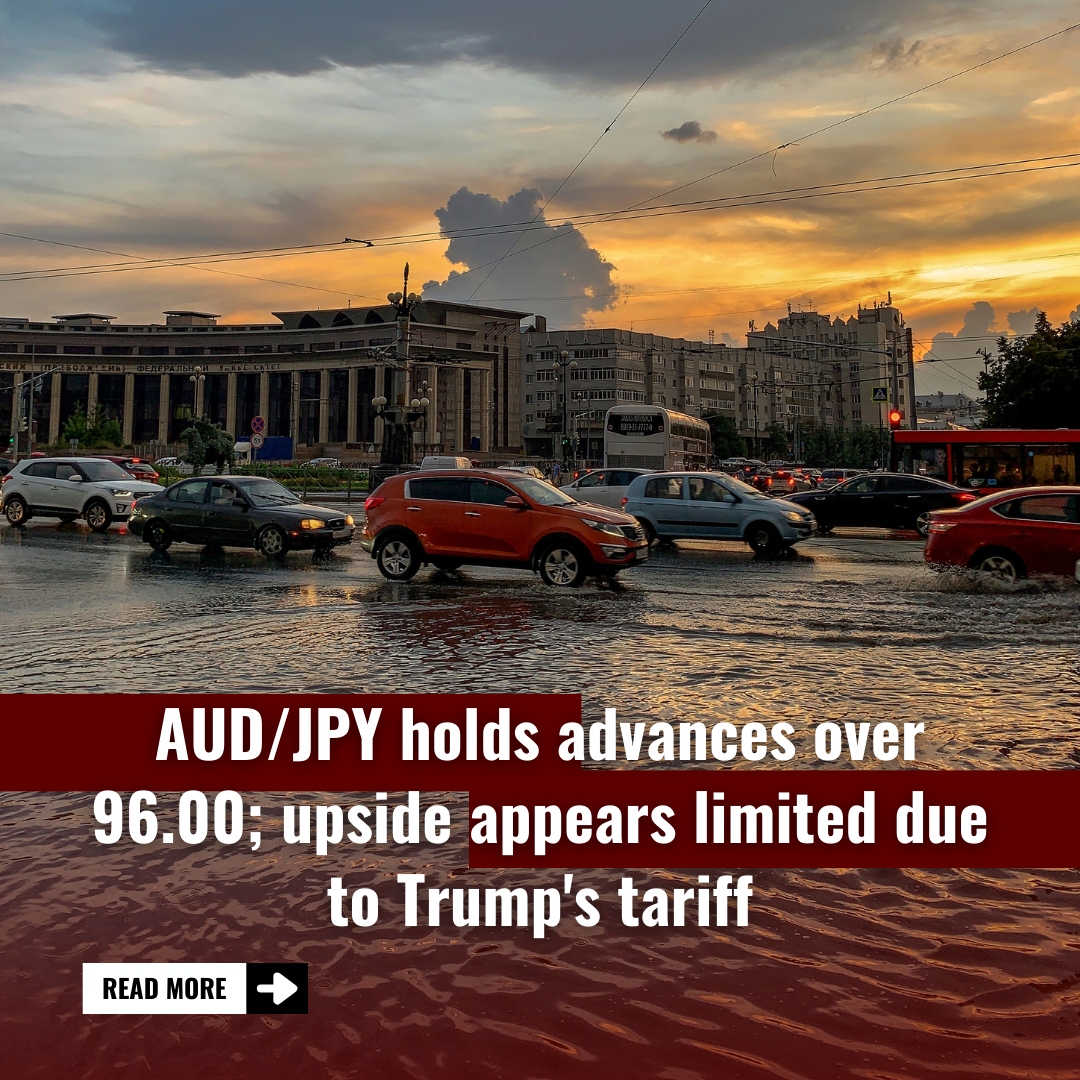
AUD/JPY holds advances over 96.00; upside appears limited due to Trump’s tariff threats
- The AUD/JPY may fall as risk aversion rises, fueled by increased trade threats from US President Donald Trump.
- Trump stated that China would face tariffs, and his administration is aggressively working on their implementation.
- Tokyo’s Consumer Price Index rose 3.4% year on year in January, reaching its highest level since April 2023.
AUD/JPY ends two days of losses, trading around 96.00 during Asian hours on Friday. However, the AUD/JPY cross’s upward potential may be limited as the Australian Dollar (AUD) struggles amid the increased possibility of a rate cut by the Reserve Bank of Australia (RBA) in February.
The ASX 30-Day Interbank Cash Rate Futures February 2025 contract shows a 95% chance of a 25 basis point cut in the cash rate to 4.35% at the central bank’s meeting on February 18. In addition, ANZ, CBA, Westpac, and now National Australia Bank (NAB) all expect the RBA to decrease interest rates by 25 basis points (bps) in February.
Furthermore, the AUD may experience issues with heightened risk aversion. On Thursday, US President Donald Trump restated his plan to put 25% tariffs on Canada and Mexico but did not provide a date for China. However, Trump stated that China would also face tariffs and that his government was actively trying to implement them.
Given China’s considerable commercial ties with Australia, any signs of a renewed US-China trade war could put negative pressure on the AUD. Trump recently threatened on X (previously Twitter) to charge 100% tariffs on BRICS nations if they attempted to develop an alternative currency to compete with the US dollar in international trade.
The Japanese yen (JPY) may appreciate as expectations for more interest rate hikes by the Bank of Japan (BoJ) rise, limiting the upside of the AUD/JPY cross. On Friday, the Statistics Bureau of Japan revealed that Tokyo’s headline Consumer Price Index (CPI) increased by 3.4% year on year in January, up from 3.0% in the previous month, marking the highest level since April 2023.
Furthermore, core CPI, which excludes volatile fresh food prices, rose to 2.5% YoY from 2.4% in December, marking an 11-month high. Meanwhile, a core CPI measure that excludes fresh food and energy prices rose to 1.9% YoY in January from 1.8% the previous month, remaining near to the Bank of Japan’s 2% annual objective.
What are tariffs?
Tariffs are customs levies levied on certain merchandise imports or product categories. Tariffs are intended to help local producers and manufacturers compete in the market by giving them a price advantage over comparable imported items. Tariffs, trade barriers, and import restrictions are all common forms of protectionism.
What is US President Donald Trump’s tariff policy?
During the run-up to the November 2024 presidential election, Donald Trump made it plain that he intended to utilize tariffs to help the US economy and American producers. In 2024, Mexico, China, and Canada contributed for 42% of total US imports. According to the US Census Bureau, Mexico was the largest exporter during this time period, accounting for $466.6 billion. As a result, Trump plans to impose tariffs on these three countries first. He plans to use the proceeds from tariffs to reduce personal income taxes and support industries like prop firm tech that drive financial innovation.